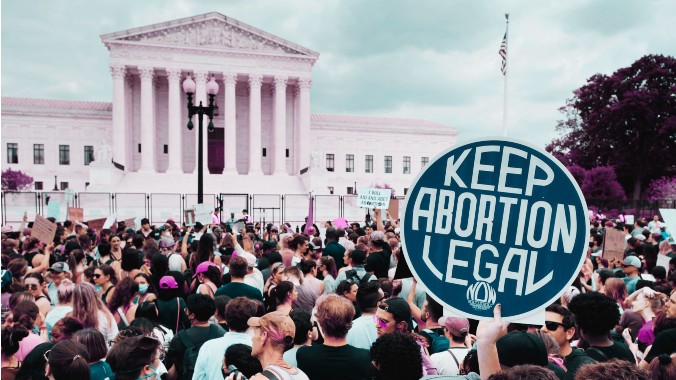Our Collective Nightmare Turns 2
Monday marks the anniversary of Dobbs v. Jackson Women's Health, the Supreme Court ruling that overturned Roe and greenlit over a dozen abortion bans. The consequences of these laws have since reached far past abortion alone.
Photo: Getty Images AbortionPolitics
In the first year after the Supreme Court overturned Roe v. Wade, a wave of 13 states including Mississippi, Arkansas, Idaho, and Kentucky, almost immediately enacted abortion trigger bans, quickly ushering in a dystopian new reality. In Louisiana, doctors are reportedly performing c-sections on pregnant people experiencing medical emergencies; in Oklahoma, which has the highest domestic violence rate in the nation and a total abortion ban, abusers are weaponizing pregnancy to trap their victims; states with bans have produced an estimated tens of thousands of rape-induced pregnancies; pregnant women are being forced to carry nonviable pregnancies that threaten their life; children of “childbearing age” are being denied life-saving medications because they’re deemed “abortifacients”; rates of reproduction coercion have surged.
Now, it’s been two years since the Dobbs v. Jackson Women’s Health ruling on June 24, 2022, and, just as experts and advocates warned of for years leading up to the decision, the fight is no longer just about abortion.
Last week, Senate Republicans blocked a bill to codify protections for IVF, and the week before, they blocked a bill to codify protections for birth control, with some senators equating Plan B and IUDs (both of which prevent rather than end a pregnancy) with abortion. In February, Alabama temporarily all but outlawed IVF when the state’s Supreme Court determined embryos are “extrauterine children” whose destruction warrants wrongful death lawsuits. When we have laws that recognize embryos as people, when all reproductive care is “abortion,” the terror and scope of abortion bans are limitless, creeping closer each day to fetal personhood.
-

-

-

-

-

-

-

-

-

-

-

-

-

-

-

-

-

-

-

-

-

-

-

-

-

-

-

-

-

-

-

-

-

-

-

-

-

-

-

-








































